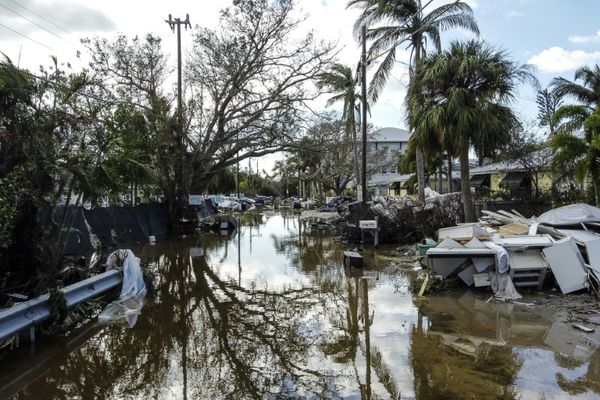
Floods, bushfires and other natural disasters are already costing the economy billions each year and losses are expected to mount as these events become more severe and frequent.
Natural disasters caused $5 billion in lost economic activity last year and impacted almost seven out of 10 Australians.
The projected economic toll of natural disasters have been revised upwards as the impacts of a changing climate become clearer.
Treasurer Jim Chalmers led an inspection of rebuilding efforts in northern NSW on Friday as flooding continues to affect many parts of the country.
In 2022, severe weather affected most states and territories, while this year South Australia and the Kimberley region of Western Australia have also been hit with flooding.
The Bureau of Meteorology issued warnings for severe thunderstorms and flash flooding in north Queensland on Friday.
Emergency Management Minister Murray Watt has activated disaster recovery payments for affected parts of the Kimberley, granting flood victims access to $1000 per eligible adult and $400 per child.
"Wherever and whenever people experience these natural disasters, the Albanese government will stand with people," he told reporters in Lismore.
The funding announcement adds to the $3.5 billion in disaster recovery payments and allowances paid in 2022, which is in addition to assistance provided through the states. Billions more are expected to be spent in 2023.
A Treasury analysis estimates a $5 billion, or 0.25 per cent of real GDP, hit to the economy from natural disasters, mainly arising from reduced activity in mining, agriculture, accommodation and food services, retail trade and construction.
The figure does not include damage to housing or transport infrastructure or the costs to the federal budget.
Rebuilding of roads, bridges and other infrastructure is expected to take years.
From a consumer perspective, the floods - coupled with disrupted supply chains - pushed up the price of fruit, vegetables and other agricultural products.
Fruit and vegetable prices increased 16.2 per cent over the year to the September quarter, compared to an average annual rate of 2.5 per cent over the 10 years preceding COVID-19.
The affordability and accessibility of insurance remains a key concern as global reinsurance company Munich Re estimates the NSW and southeast Queensland floods in February and early March were the fourth most costly global disaster in 2022.
Dr Chalmers said contributing to a reinsurance pool, which is essentially insurance for insurers in large-scale disasters - was one way the government could support affordable insurance for Australian homes and businesses in high-risk areas.
"There's a role there but we need to be careful about how we expose the government's balance sheet to some of these big risks," he said.
In last year's budget, the government funded a partnership between governments and insurance companies to identify the best policy solutions to reduce insurance costs for high-risk areas.
Dr Chalmers said natural disaster support would be a key focus of the May budget, as it was in his first budget in October.







